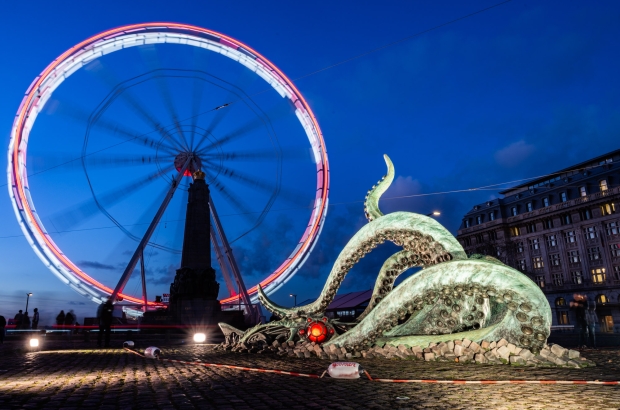- Daily & Weekly newsletters
- Buy & download The Bulletin
- Comment on our articles
Giant octopus symbolising ‘fantastical Brussels’ enjoys temporary home in Place Poelaert
Tentacles emerge from the cobblestones at the centre of Place Poelaert; the strange red-eyed creature stretching one of its semi-furled feelers skywards to reveal a strip of menacing suckers.
This is Nauti-Octopus, a 12-tonne bronze behemoth surrounded by other colossuses: the scaffolding-clad Palais de Justice and the spinning Ferris wheel soaring above downtown Brussels.
The cactus-like sculpture, an ephemeral installation, was inaugurated under a dazzling sun and piercingly-cold wind by its creators, Belgian cartoonist and scenographer François Schuiten and French sculptor Pierre Matter, along with a bevy of Franco-Belgian dignitaries.
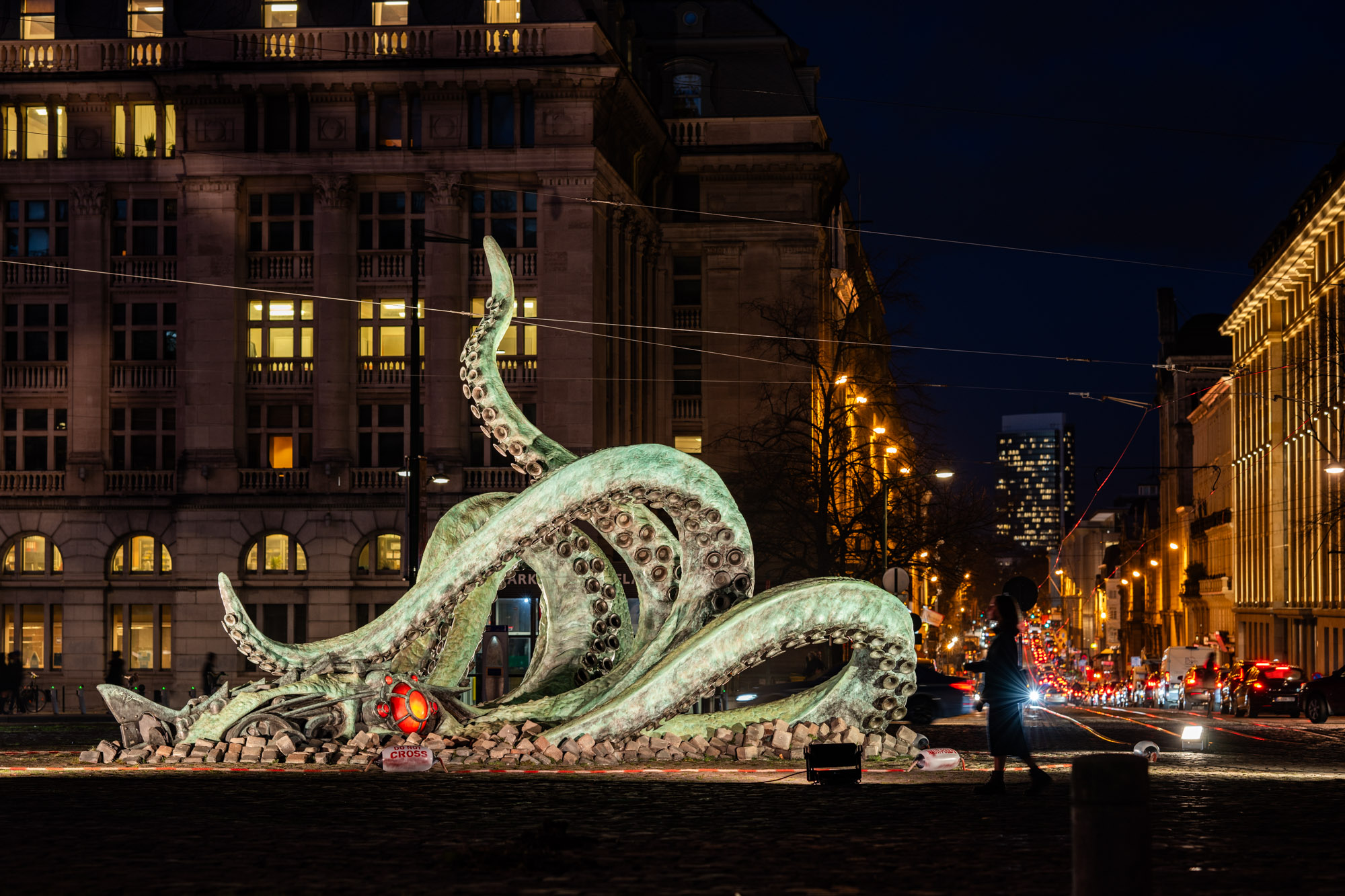
As an incarnation of the fantasy underwater universe of Jules Verne, the hybrid monster-machine was commissioned by the town of Amiens to honour the 120th anniversary of the French sci-fi writer’s death in 1905.
Before being installed permanently in the Somme capital where Verne spent his later years, the cephalopod creature is enjoying a brief interlude in the Belgian capital where it creates a surrealist scene: a symbolic confrontation with the iconic and crumbling Palais de Justice that served as a setting for Schuiten and Peeters’ album series Les Cités obscures.
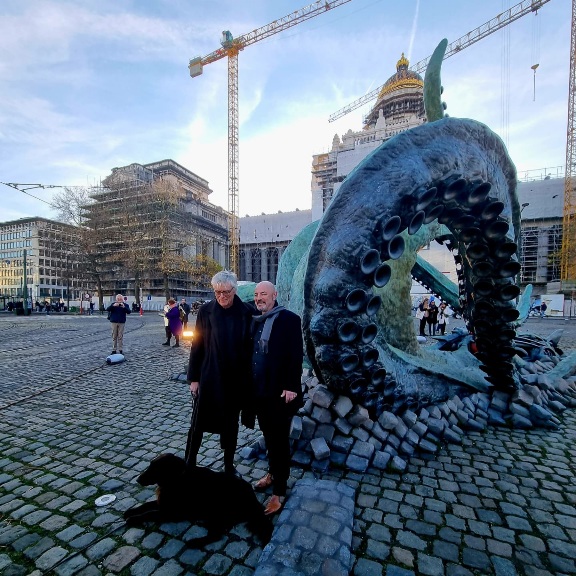
For Schuiten (pictured above left with Pierre Matter), the realisation of the monumental hybrid creature is a major accomplishment. "It's a childhood dream to see this giant octopus with a Nautilus-shaped head emerge from Jules Verne's books," he said, adding: "It's never too late to make your childhood dreams come true."
As for when the largest law courts in the land is likely to have its scaffolding removed after almost 40 years of renovation, the comic strip artist suggested optimistically: "In a year?"
Meanwhile, Brussels mayor Philippe Close welcomed the new temporary resident to the square that was inspired by a work "that has made so many generations dream".
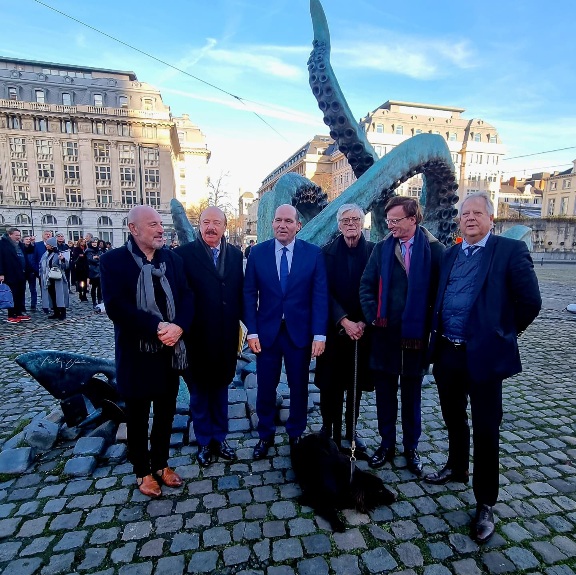
The president of Amiens Métropole, Alain Gest, responded with the hope that the sculpture would encourage future generations to travel like the novels by "creative genius" Verne. He also hoped the people of Brussels would be inspired to travel to Amiens, where the monumental work will be given a home in March, fittingly surrounded by water.
As one of Verne’s most famous adventure tales, Twenty Thousand Leagues Under the Sea is now recognised as a futuristic and literary classic. Captain Nemo’s underwater vessel, the Nautilus, was a pretty accurate precursor of the modern submarine that in the 1860s was still rather rudimentary.
The writer is also credited for being a pioneer of the the science-fiction subgenre steampunk. A literary and social movement that glamorised 19thcentury technology, it’s currently enjoying a revival in popular culture as attested by Nauti-Octopus.
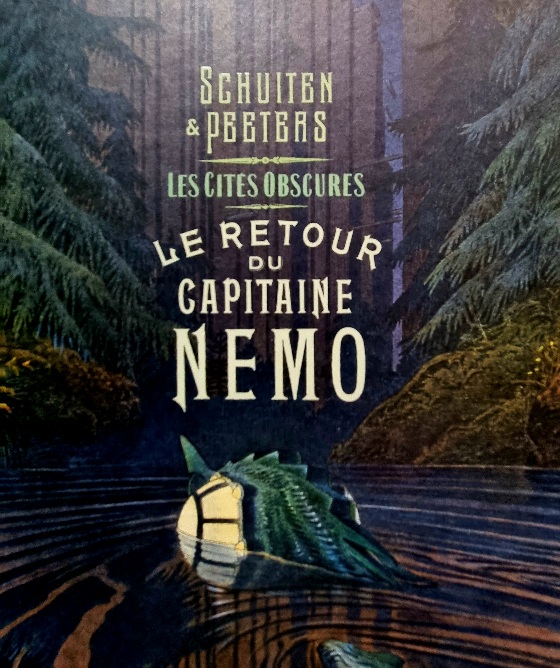
Accompanying the public installation is an exhibition at the Champaka Gallery of Schuiten’s original artwork for the album Le retour du Capitaine Nemo, published by Casterman. Alternating comic strip with illustrations, it is full of detailed and evocative images that inspired the sculpture. The show is also an opportunity to acquire pages from the album, as well as its dark cover featuring the menacing red eye of the underwater monster.
Nauti-Octopus is an initiative of the Belgian comic book collector Thomas Spitaels, Champaka Gallery, the City of Brussels and Interparking.
Le retour du Capitaine Nemo
Until 28 December
Champaka Gallery
Rue Ernest Allard
Brussels
Photos: ©Julien De Wilde; François Schuiten and Pierre Matter, Inauguration group photo and album cover ©Sarah Crew












